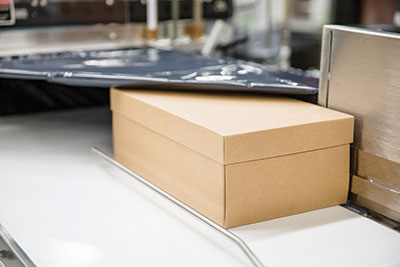As shippers seek ways to reduce costs associated with direct-to-consumer e-fulfillment, they’re looking specifically to minimize freight and labor expenses while still protecting an order’s contents, says Jeff Potts, global executive director of marketing for e-commerce and fulfillment at Sealed Air.
“We developed the StealthWrap system to address three pain points: eliminate the corrugated yet maintain the concealment and protection properties; lower dimensional weight shipping rates; and address the increasing cost and scarcity of labor,” Potts explains.
As a durable plastic wrap, StealthWrap is first applied over a product’s primary packaging. The wrapped item then travels through a heat tunnel that shrinks the film to precisely match its shape and dimensions, eliminating the shipping carton and packing materials.
“The film is 29 layers thick and comes in either a dark gray color or a brown that mimics corrugated,” says Potts. “Both material colors completely obscure the contents, yet are considerably thinner and lighter than corrugated.” He adds that the 100% opaque, ultra-durable material provides security for electronics, including laptops and soundbars, as well as privacy for discrete goods, such as adult incontinence products.
Further, because it conforms to the precise dimensions of the shipped item, the material doesn’t add the weight or bulk of corrugated, cutting freight costs by 18%. “We can save customers between $0.60 and $2 per package—in many cases more in freight savings than the material itself costs—because StealthWrap doesn’t add volume and only weighs a few ounces, whereas a box can add as much as 4 pounds depending on what it’s made of and its size,” Potts adds.
Additionally, because application is automated, it considerably cuts down on the labor required to erect, pack and seal boxes. This, Potts says, increases throughput velocity by 20 times or more: “It typically takes about a minute to pack an item manually; we can comfortably run up to 20 packages per minute on this system.”
Other cost savings include the elimination of shipping cartons stocked and the warehouse space that requires, as well as an increase in truckload density. Most customers see a return on investment in less than six months, he concludes.
Related Product Video
Article topics








